Pallas anum simulat...
Ovid, Metamorphoses, VI.26
Minerva disguises herself as an old woman...
IMP NERVA CAESAR AVG [lacuna] PONT MAX TRIB POTEST II IMP II COS [lacuna] NERVAE FECIT.
CIL 6.31213, inscription on Domitian’s Temple of Minerva in Domitian’s Forum of Minerva
In the year 97 A.D. Nerva did something to something of Minerva's or possibly to something of his own.
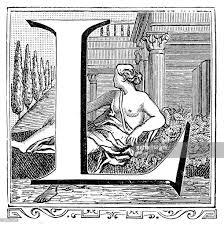 AST MONTH I WROTE ABOUT the significance of the wingless thunderbolt, a Domitianic attribute of the goddess Minerva. Not entirely by coincidence, this month's featured coin, RPC 1667, also shows a wingless thunderbolt, but regardless of that it is a very special coin in its own right, entirely worthy of the honor.
AST MONTH I WROTE ABOUT the significance of the wingless thunderbolt, a Domitianic attribute of the goddess Minerva. Not entirely by coincidence, this month's featured coin, RPC 1667, also shows a wingless thunderbolt, but regardless of that it is a very special coin in its own right, entirely worthy of the honor.
First of all, this coin has a superb and unique pedigree, no. 21 in the Metcalf Caesarea Conspectus. Furthermore this coin is cited in RPC, not in the small print at the end of the coin description, but right after the specifications, as a major reference.
Second, due to a transcription error duplicating the description of RPC 1668 (the mistake then carried over into RPC Online), RPC 1667 was never properly identified, so I am seizing the opportunity to do that here.
Third, it's a pretty coin and quite rare. Here it is, RPC 1667--
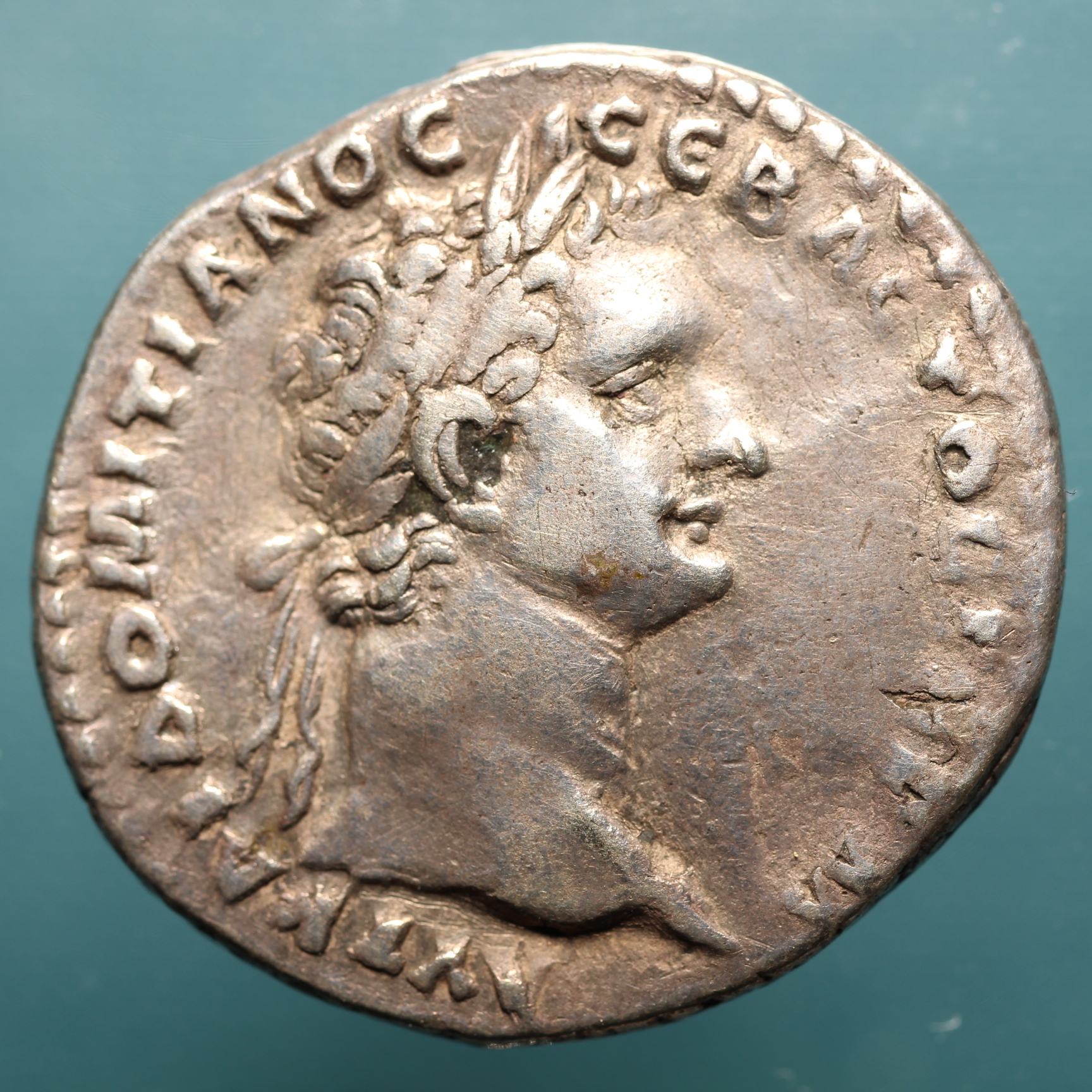
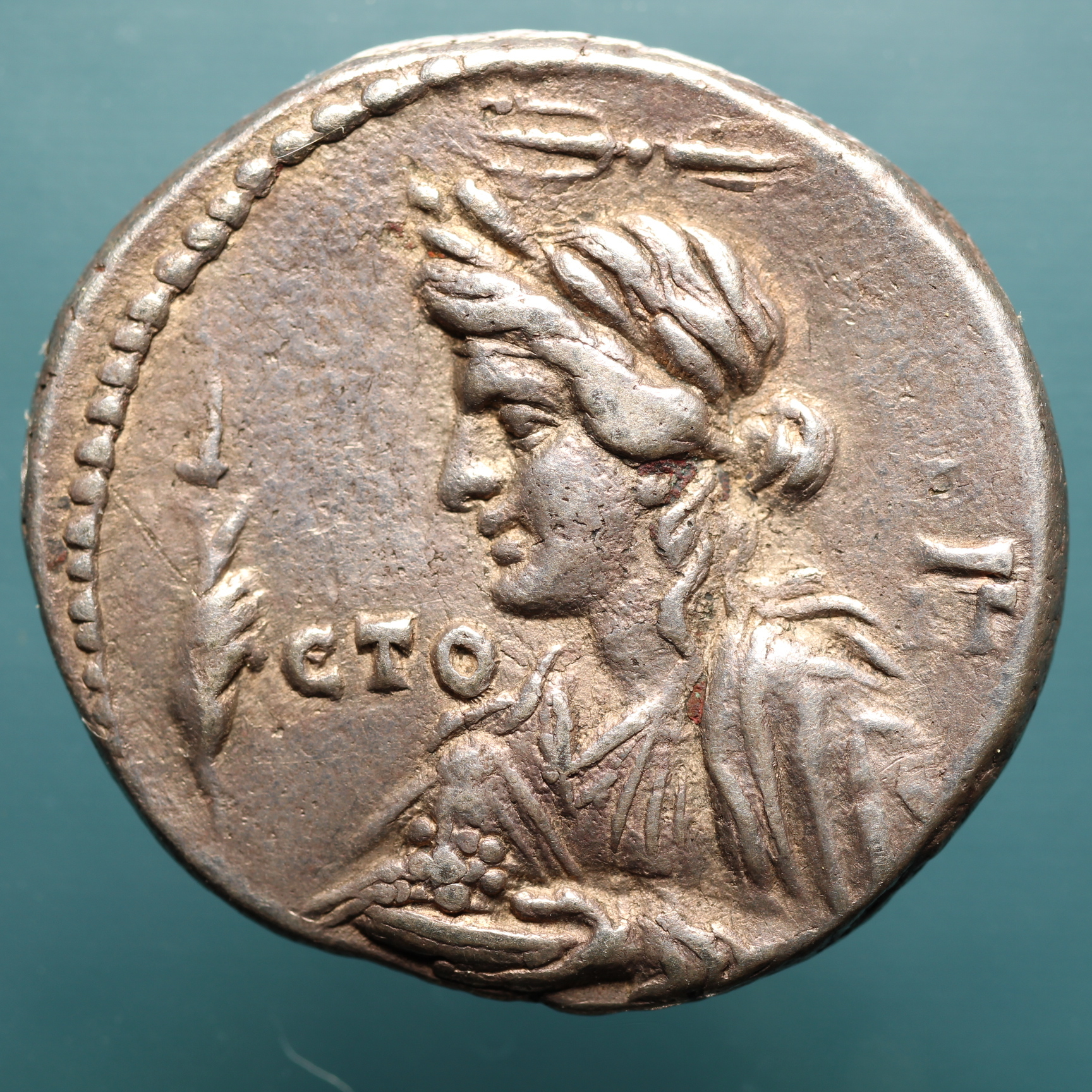
Domitian himself appears on the obverse of this didrachm, laureate right, the engraving obviously the product of the mint in Rome. (More about this in a minute.)
There is disagreement regarding the figure on the reverse. Quoting from the Metcalf Conspectus, "Bust l., spear upright in r., patera in l.; above, thunderbolt." Sydenham similarly describes the attributes but identifies the figure as Vejovis (youthful Jove). CNG's description in their auction catalog reads, "Laureate and draped female half-length bust left, holding distaff and woven plate holding fruits and grain ears, thunderbolt above." And, as I pointed out above, RPC describes the wrong coin. Of the three remaining identifications, CNG's is very close.
It is a female figure, woman's hair, woman's clothes. She is carrying a distaff in her right hand, not a spear, and there is a thunderbolt, a wingless thunderbolt, above. This is enough information to make a correct identification. The "female" is of course Minerva, Minerva Ergane, to be more precise. The distaff is her distinctive attribute and, as we determined last month, so is the wingless thunderbolt. The fruit on the plate are olives and she is not laureate but oliviate, wearing an olive wreath. This is Minerva Ergane, goddess of skilled workmen, bestowing the gifts of spinning on the women and olive cultivation on the men!
What? you're probably asking, not unreasonably, Where's her helmet? How can she be Minerva without a helmet?
Minerva, having sprung fully-armed from her father's forehead, nearly always does wear a helmet, but not invariably. What about when she travels among mortals in disguise, as she does in many stories? Her helmet would be a dead giveaway. Here is a piece of fine art illustrating that point, by the Dutch sculptor Jona Lendering--
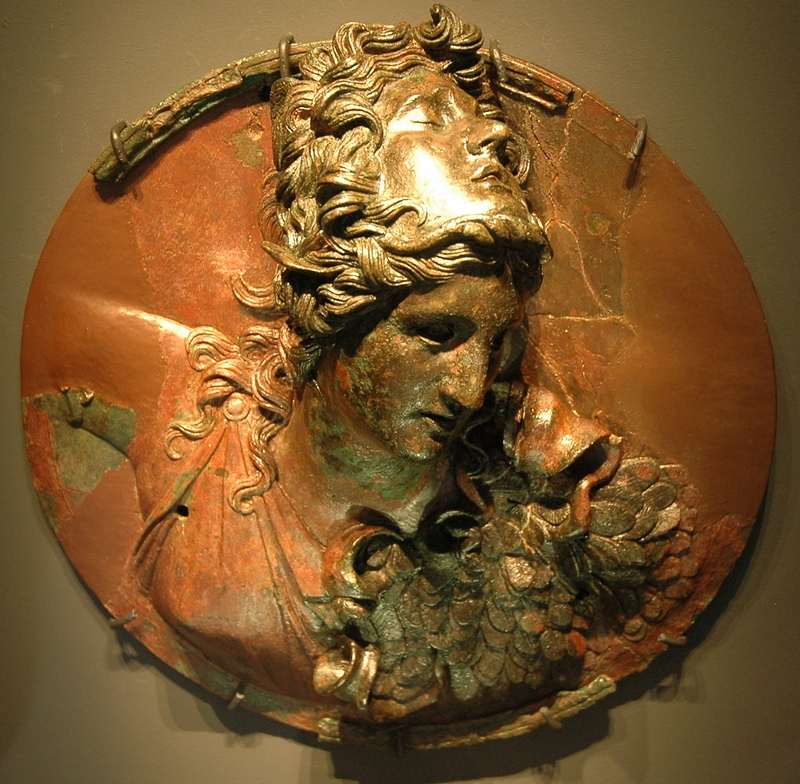
No helmet.
From time to time, Minerva Ergane appears without a helmet as well, using other identifying attributes instead. Another sculptor, the great Phidias from the fifth century B.C., had this to say about Minerva Ergane--
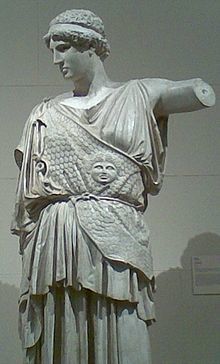
A Roman copy in marble of Phidias's original bronze, but no helmet. Note the alternate attribute, the aegis.
Next, here is a red-figure vase painting by another fifth-century artist, Douris--

Minerva Ergane, appearing to Hercules, carrying an owl as attribute, bare-headed but for an olive wreath, her helmet close at hand. Truth is, as the bringer of the arts to mankind, Minerva doesn't need to wear her helmet, though she usually does, even as Ergane.
It is worth pointing out the date on this month's featured coin, ЄΤΟ ΙΓ, RY 13, A.D. 94. Imagine what was happening in Rome as the dies for this coin were being cut. One thing for certain, an emperor who adored Minerva was busy putting a forum together around her newest temple, with a flanking colonnade surmounted by a frieze celebrating Minerva Ergane. Hmm, the engraver wonders out loud, what reverse should I cut next, and should I put a helmet on her noggin or give her our emperor's new identifying attribute instead? Silly question.
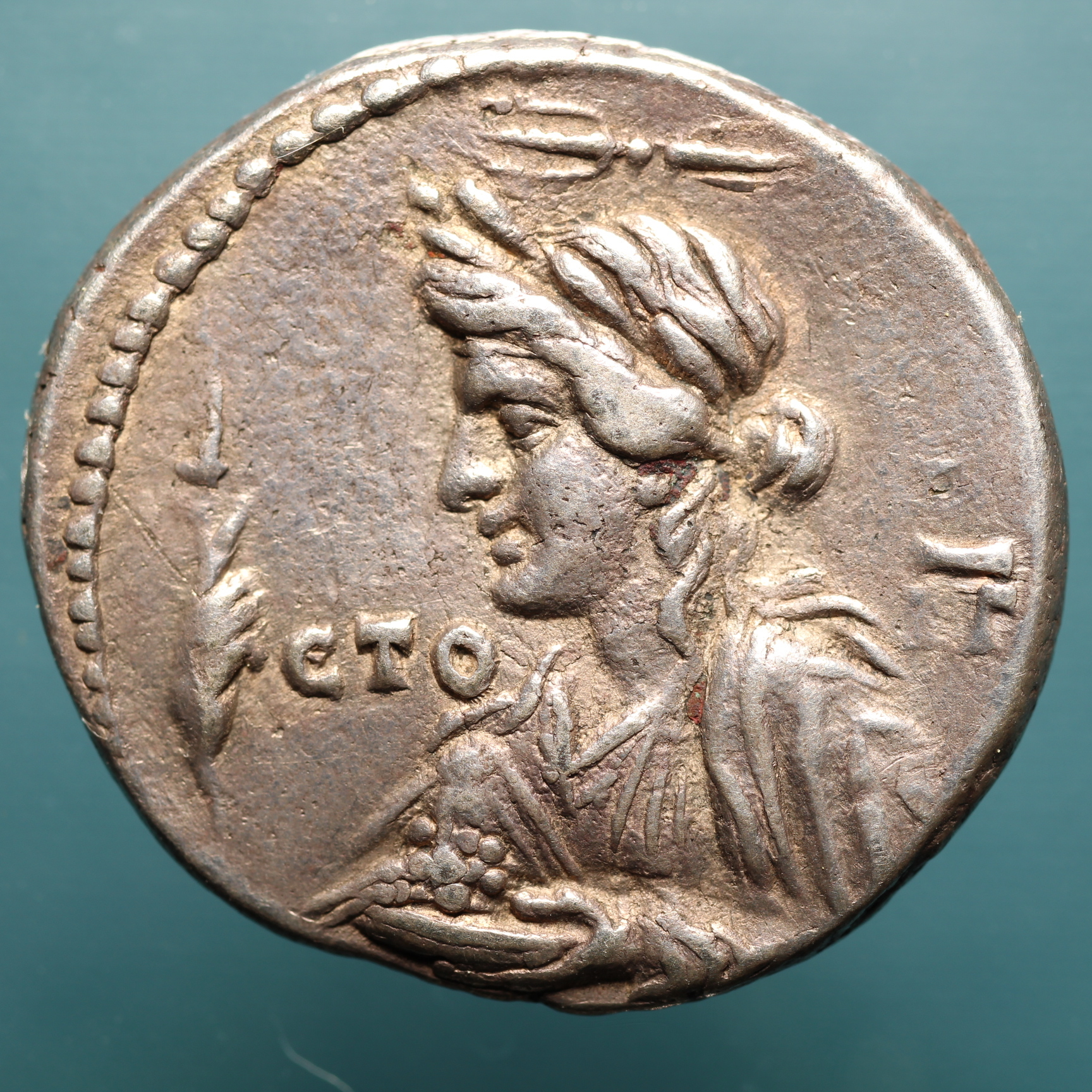
On my most recent visit to Rome, before COVID-19, I was very excited about visiting this Forum of Domitian and seeing le Colonnacce, two columns and what little remains of the frieze that once decorated the perimeter of the forum. Here is how it appears in a William Walcot etching from 1914--
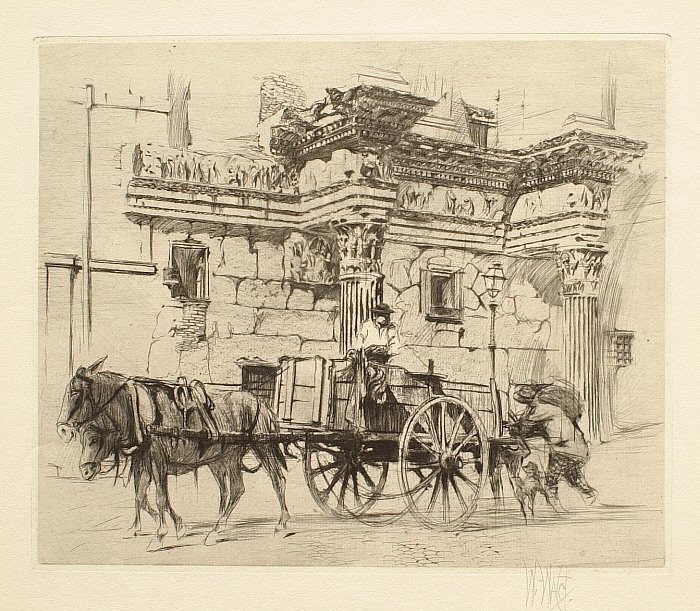
And here is how it appeared the week I visited--
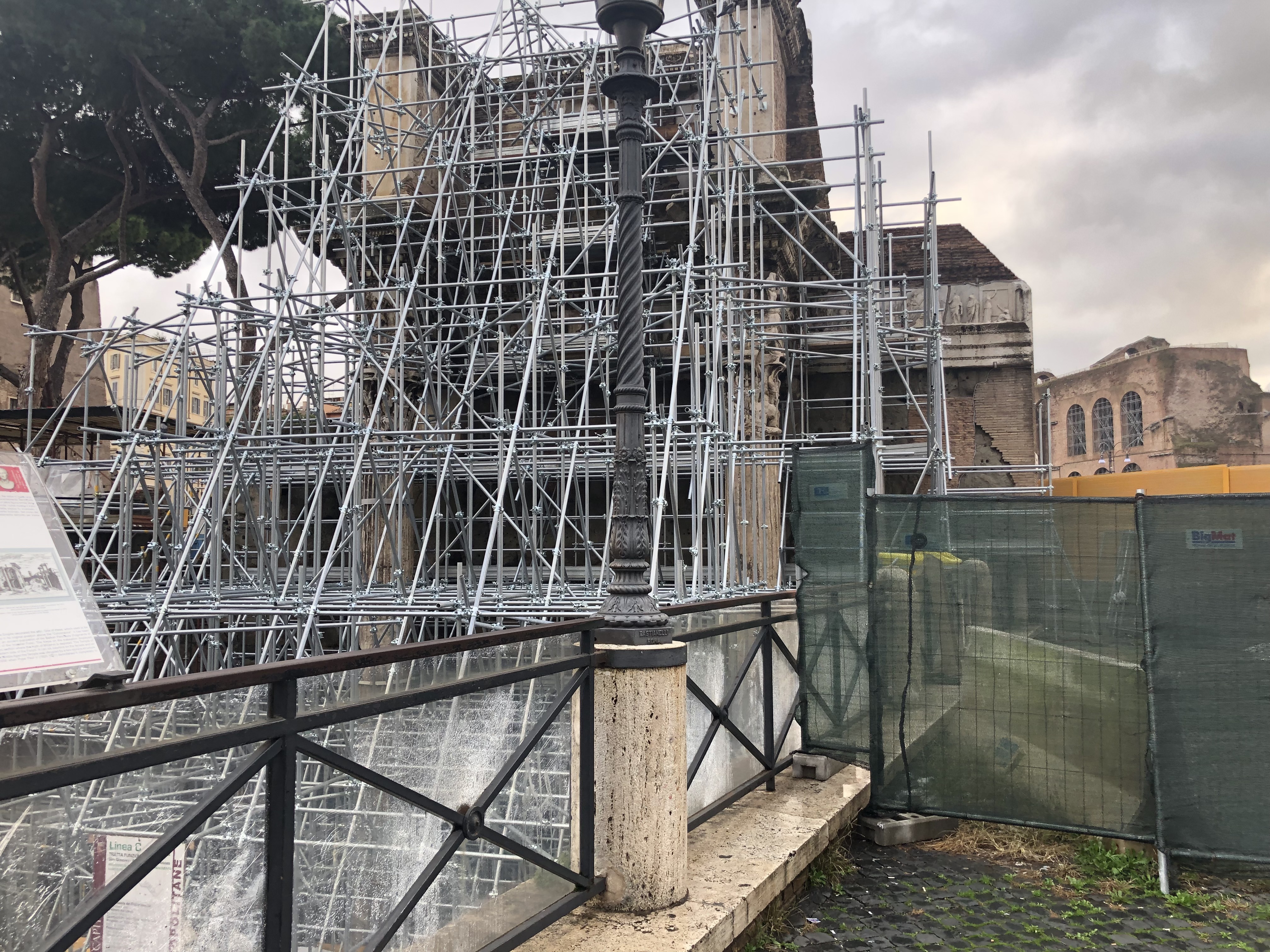
Oh well. This is what I was hoping to get a better look at--

The tall figure in the middle (sixth from the right) is Minerva Ergane about to smite Arachne and turn her into a spider. All of the figures are now headless. Was Minerva helmet-less as well? And if so, did it inspire our engraver? More questions than answers.
Next time: Science!

